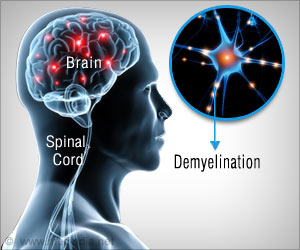
“We identified a set of cells that appear to be driving some of the chronic inflammation seen in progressive MS,” said Daniel Reich, M.D., Ph.D., senior investigator at NINDS. “These results give us a way to test new therapies that might speed up the brain’s healing process and prevent brain damage that occurs over time.”
Chronic active lesions are characterized by a slow, expanding rim of immune cells called microglia. Microglia normally help protect the brain, but in MS and other neurodegenerative diseases, they can become overactive and secrete toxic molecules that damage nerve cells. Other cells found at the edge of the lesions, such as astrocytes and lymphocytes, may also contribute to ongoing tissue damage. Prior studies suggest that microglia are the main culprits behind lesion expansion, but the exact types of cells found near lesions and their biological mechanisms are elusive.
To better understand MS lesions, Dr. Reich and his colleagues used single-cell RNA sequencing, a powerful technique which enables researchers to catalog gene activity patterns in individual cells, to examine post-mortem brain tissue of five MS patients and three healthy controls. Samples were provided by the Netherlands Brain Bank, Netherlands Institute for Neuroscience, Amsterdam, the Netherlands, and the NINDS Neuroimmunology Clinic.
“Single-cell RNA sequencing technology allows us to do a much deeper dive into the types of cells present in MS lesions,” said Dr. Reich.
By analyzing the gene activity profiles of over 66,000 cells from human brain tissue, researchers created the first comprehensive map of cell types involved in chronic lesions, as well as their gene expression patterns and interactions.
Dr. Reich’s team found a great diversity of cell types in the tissue surrounding chronic active lesions compared to normal tissue, and a high proportion of immune cells and astrocytes at the active edges of those lesions. Microglia comprised 25% of all immune cells present at the lesion edges.
“Our dataset is very rich. The beauty of having such a detailed map is that now we have a better understanding of the entire network of cells involved in smoldering inflammation,” said Martina Absinta, M.D., Ph.D., a former post-doctoral fellow in Dr. Reich’s lab and current adjunct assistant professor at Johns Hopkins University, Baltimore, who led the study.
More detailed analyses revealed that the gene for complement component 1q (C1q), an important and evolutionarily ancient protein of the immune system, was expressed mainly by a subgroup of microglia responsible for driving inflammation, suggesting that it may contribute to lesion progression.
To determine the function of C1q, researchers knocked out the gene in the microglia of mouse models of MS and examined the brain tissue for signs of neuroinflammation. In mice lacking microglial C1q, they found significantly decreased tissue inflammation compared to control animals.
Additionally, in another group of animals, blocking C1q reduced iron-containing microglia, revealing a potential new therapeutic avenue to treat chronic brain inflammation in MS and related neurodegenerative diseases.
READ RELATED: High blood pressure – the five exercises you can do at home to prevent hypertension
According to the authors, it’s possible that targeting C1q in human microglia could halt MS lesions in their tracks.
In MS, the immune system attacks myelin, a protective layer that forms around nerve cells in the brain and spinal cord, leading to vision loss, muscle weakness, problems with balance and coordination, fatigue, numbness, and other debilitating symptoms.
A subset of people develop progressive MS, resulting in extensive brain tissue damage and disability. Anti-inflammatory medications help patients manage their symptoms by dampening the responses of immune cells in the blood and lymph nodes.
But treatments are not as effective for patients with chronic lesions who experience ongoing brain tissue inflammation.
“We have terrific therapies that block new inflammation but nothing to stop the inflammation that’s already there,” said Dr. Reich. “In order to make strides in developing new therapies for progressive MS, we’re going to need to pick apart the cellular and molecular mechanisms one by one.”
In 2019, Dr. Reich and his team reported that damaging, chronic active lesions may be a hallmark of progressive MS. The current study identifies microglia and C1q as promising targets for progressive MS and supports the use of chronically inflamed rim lesions as an MRI biomarker for disease progression.
There is no cure for MS, and no therapies that directly treat chronic active lesions. By gaining a deeper understanding of lesion features, this study may help pave the way toward early clinical trials to test new therapies for this aspect of the disease.
Source: Medindia
Source:










